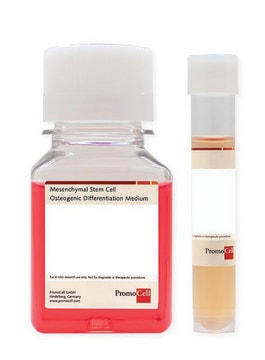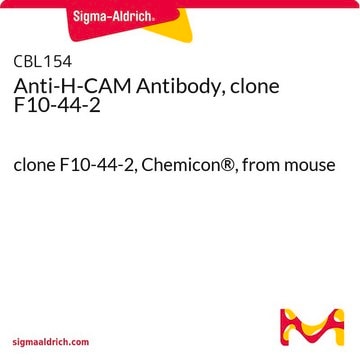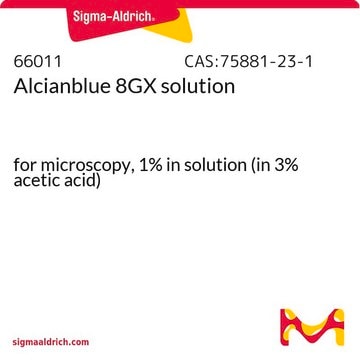There are no definitive references or citations confirming the light sensitivity of this material. However, this product is packaged in amber glass may be susceptible to light, particularly at UV wavelengths. In bright field microscopy slides must be viewed in subdued light. While this item is not tested for use in fluorescent, it has been used on Flow Cytometry and has an emission wavelength of approximately 600 nm. There are a number of publication indicating light sensitivity. See the link below to review on such example:
https://www.ncbi.nlm.nih.gov/pmc/articles/PMC5931440/
Wichtige Dokumente
O1391
Ölrot O -Lösung
0.5% in isopropanol
Synonym(e):
Ceresrot 5B, Solvent Red 27
Größe auswählen
Größe auswählen
About This Item
Empfohlene Produkte
Form
liquid
Konzentration
0.5% in isopropanol
Methode(n)
microbe id | staining: suitable
Farbe
dark red
εmax
0.20-0.50 at 510-517 nm
Anwendung(en)
diagnostic assay manufacturing
hematology
histology
Lagertemp.
room temp
SMILES String
N(\N=C3\c4c(cccc4)C=CC\3=O)c1c(cc(c(c1)C)N=Nc2c(ccc(c2)C)C)C
InChI
1S/C26H24N4O/c1-16-9-10-17(2)22(13-16)27-28-23-14-19(4)24(15-18(23)3)29-30-26-21-8-6-5-7-20(21)11-12-25(26)31/h5-15,29H,1-4H3/b28-27?,30-26-
InChIKey
HJAYEODIXUYVIC-LTFAAIOASA-N
Suchen Sie nach ähnlichen Produkten? Aufrufen Leitfaden zum Produktvergleich
Verwandte Kategorien
Allgemeine Beschreibung
Anwendung
Signalwort
Danger
H-Sätze
Gefahreneinstufungen
Eye Irrit. 2 - Flam. Liq. 2 - STOT SE 3
Zielorgane
Central nervous system
Lagerklassenschlüssel
3 - Flammable liquids
WGK
WGK 2
Flammpunkt (°F)
53.6 °F - closed cup
Flammpunkt (°C)
12.0 °C - closed cup
Hier finden Sie alle aktuellen Versionen:
Analysenzertifikate (COA)
Die passende Version wird nicht angezeigt?
Wenn Sie eine bestimmte Version benötigen, können Sie anhand der Lot- oder Chargennummer nach einem spezifischen Zertifikat suchen.
Besitzen Sie dieses Produkt bereits?
In der Dokumentenbibliothek finden Sie die Dokumentation zu den Produkten, die Sie kürzlich erworben haben.
Kunden haben sich ebenfalls angesehen
Artikel
Development of a novel serum-free and xeno-free human mesenchymal stem cell (MSC) osteocyte differentiation media.
PLTMax® Human Platelet Lysate (hPL) is a superior serum-free and xeno-free media supplement alternative to fetal bovine serum (FBS) for human mesenchymal stem cell (MSC) cultures.
Frequently asked questions about mesenchymal stem cells including MSC derivation, expansion, differentiation and allogenic stem cell therapy.
Protokolle
Osteogenesis, adipogenesis and chondrogenesis differentiation protocols and media for human mesenchymal stem cell culture. Explore over 350 PromoCell products on our company website.
Information about mesenchyme, specifically mesenchymal stem cell procotols. Step-by-step cell culture protocols for mesenchymal stem cell (MSC) isolation, expansion and differentiation.
-
Hi! I'm wondering if OilRedO is light sensitive? Does the incubation need to take place in the dark? And could the staining of cells be compromized if the solution is not kept dark?
1 answer-
Helpful?
-
-
What are the differences between Oil Red O solution O1391 and OIL RED O staining solution 1.02419?
1 answer-
There are not many differences between products O1391 and 102419. O1391 is available in 250 mL and 500 mL bottles, while 102419 is available only in a 250 ml bottle. The only practical difference between the two products is the solvents used to dissolve the Oil Red O. For O1391, the solvent used is isopropyl alcohol, while the solvents used for 102419 are acetone and ethyl alcohol. Both products use Oil Red O as the dye, and the directions for use call for diluting the product with water prior to use and then filtering. The results should be identical since both products use Oil Red O as the dye.
Helpful?
-
-
Should cells or tissues be fixed before staining with Oil Red O for fats or lipids?
1 answer-
Yes, cells or tissues need to be fixed before staining with Oil Red O. It is important to avoid using fixatives that contain alcohol. Oil Red O staining can be performed on cultured cells and fresh frozen tissue. However, tissues should not be paraffin embedded and exposed to the alcohols and solvents necessary for paraffin processing tissue.
Helpful?
-
-
Hi I purchased Oil Red O solution – 0.5% in isopropanol, 01391 250mL, PCode-1003585017, Source, SLCP2956 for staining of whole mice aorta. I want to dilute it to 0.16% solution. What solution should I use for dilution? MilliQ water/methanol/isopropanol?
1 answer-
This product can be further diluted using distilled water or aqueous buffer to reach the desired concentration. Note that solution diluted with water or aqueous buffers are less stable and should not be stored for extended periods.
Helpful?
-
-
Can I use this solution for stain frozen sections ? I thought that I bought oil red in propylene glycol. What is the difference ?
1 answer-
This O1391 is a 0.5% solution in isopropanol. Product O1516 is a 0.5% solution in propylene glycol. The protocol for either product is the same. There is some evidence in the literature that the propylene glycol solution performs better on PFPP samples, however this is not definitive and may depend on conditions and technique. Each is considered a stock concentration. Stock solutions can range from 0.2 - 0.5%. Depending on the specific application the stock solution will need to be further diluted by 40 - 60%. For example, in staining frozen sections, 30ml of the O1391 would be diluted with 20ml of distilled water to reach a working concentration. Note that solution diluted with water or aqueous buffers are less stable and should not be stored for extended periods.
Please see the link below to review and article that may be helpful:
https://www.ncbi.nlm.nih.gov/pmc/articles/PMC3449473/pdf/10616_2004_Article_3903.pdfHelpful?
-
-
How do you prepare the working solution using this reagent? or is it already a prepared working solution?
1 answer-
This product is a 0.5% solution in isopropanol and is considered a stock concentration. Stock solution can range from 0.2 - 0.5%. Depending on the specific application the stock solution will need to be further diluted by 40 - 60%. For example, in staining frozen sections, 30ml of the O1391 would be diluted with 20ml of distilled water to reach a working concentration. Note that solution diluted with water or aqueous buffers are less stable and should not be stored for extended periods.
Helpful?
-
Active Filters
Unser Team von Wissenschaftlern verfügt über Erfahrung in allen Forschungsbereichen einschließlich Life Science, Materialwissenschaften, chemischer Synthese, Chromatographie, Analytik und vielen mehr..
Setzen Sie sich mit dem technischen Dienst in Verbindung.












